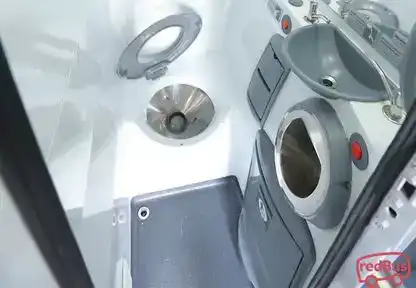Buy Chiclayo to Bagua Chica Bus Tickets Online - Unlock Extra Savings with redDeals on redBus
Reserve a bus from Chiclayo to Bagua Chica with redBus, Peru, and grab exclusive redDeals. Choose from 156 deals on 38 bus operators and avail yourself of discounts up to 25% on your bus travel!
Chiclayo to Bagua chica Bus
The route from Chiclayo to Bagua Chica is at a distance of 193 mi (311 km) travelling on the highway for about 4 hours. The transportation company Civa covers this route, providing bus tickets at s/. 20. The bus leaves at 8:40 p.m. from the terminal of Av. Francisco Bolognesi, in the central area of Chiclayo. Their destination is the Terminal Terrestre of Av. Héroes del Cenepa, in the outskirts of Bagua Chica, close to the Utcubamba river. The climate in Bagua Chica is tropical and warm during most of the year, with high temperatures that average 86 °F (30 °C). When you go to Bagua Chica you will have the chance of making ecotourism and visit the archaeological sites nearby.
Why book a Chiclayo to Bagua Chica bus with redBus?
You can also time-to-time redBus offers while booking your bus tickets online from Chiclayo to Bagua Chica. Follow a simple, fast and secure bus booking procedure. This helps save time and also helps to create a joyful travel experience!
About Chiclayo
The name of the city comes from Chidayep and Chiclayoc, words in mochica language which mean “green that hangs”. It was the place where the culture mochica was born in the period of 0-600 B.C. Its foundation took place in 1560, during the colonial period, as a rural house; this lasted until the republic period, when the city started to grow due to its commercial importance and privileged location. Today we can appreciate on the outskirts and museums the legacy of a large culture moche, which dominated the valley centuries before. Declared the “capital of the friendship” for its hospitality, charm and good disposition of the residents, Chiclayo is the place where every traveller who likes history, good food and beaches with a good climate can’t miss.
About Bagua Chica
Bagua Chica is popularly known as Bagua, to distinguish it from Bagua Grande, a city nearby that also is part of the Amazonas department. The history of the area where it’s settled nowadays is very related to the bagua culture, developed between the 1300 to 200 b.C. It’s considered as one of the most ancient of the north-east of Peru. The old bagua stood out particularly in pottery, but they were also good farmers and hunters. The lifestyle of this culture was very tied to the Bagua river -that is known today as Utcubamba river-, so they were good swimmers and fishermen. During the 15th and 16th centuries the little nation of Bagua was big enough to take up a great part of the valley of low Utcubamba. Their importance was so big that they even had their own language, sophisticated and rich in words, that reflected the potential that they would reach if there was not Spanish colinization. It’s a pity that today the language of the bagua is mostly extinguished; they only conserve some words at school and references that show their existence.

